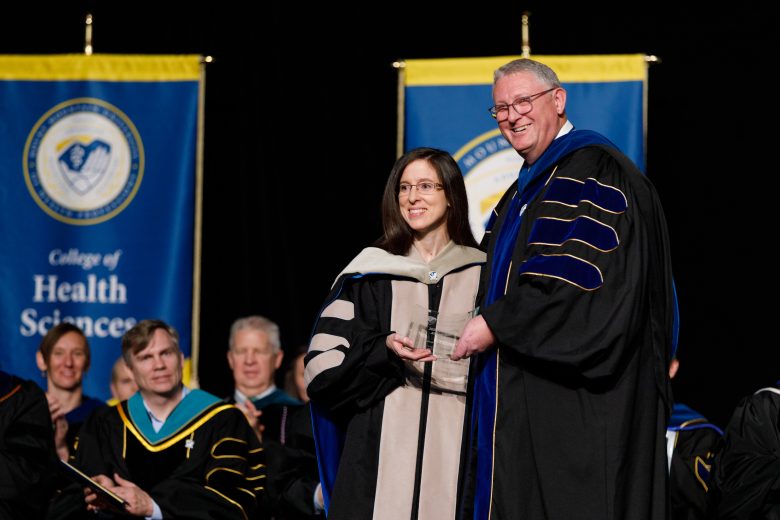Lynn Gitlow, PhD, OTR/L, ATP, FAOTA, is the Assistive Technology Elective Track Director for the Doctor of Occupational Therapy program at Rocky Mountain University of Health Professions (RMU). As an occupational therapist with over 30 years practicing in the areas of mental health, geriatrics, and assistive technology, Gitlow explains assistive technology and resources for occupational therapists.
Understanding Assistive Technology
Assistive technology is used by a variety of healthcare providers. “According to the World Health Organization, Assistive technology is an umbrella term covering the systems and services related to the delivery of assistive products and services. Assistive products maintain or improve an individual’s functioning and independence, thereby promoting their well-being,” said Gitlow.
It can be anything that improves the functional ability of a person with a disability, she explains. “Most of the time, I use very simple devices to improve a person’s functioning. For example, rather than recommending a self-feeding device, which could be expensive, I can make a thicker handle on a spoon with pipe insulation found at any hardware store to help patients have a better grip on the spoon.”
Gitlow also works with patients who have cognitive disabilities; therefore, “I use sticky notes so they remember steps and processes. For example, we use sticky notes to help remind them to brush their teeth.”
Assistive Technology is About What’s Best for the Patient
Effective assistive technology is not about finding the best technology. It’s about matching the right technology to the right patient.
Gitlow explains, “You have to know how to do a comprehensive evaluation in order to match a person with the type of technology they need. As an occupational therapist, I use a conceptual model so that I’m sure that I’m considering all the factors that I have to think about when I’m doing my evaluation. That means not just considering the attributes of the individual, such as their cognitive and physical functioning, but I also have to consider the attributes of the environment in which they function–where do they live, what environment do they want to be in, who is in the environment and what capabilities do they have, and, most importantly, what do they want to do.”
Choosing the Right Assistive Technology
There are three important questions to consider when determining which assistive technology to recommend to a patient:
- What do you want to do?
- Where do you want to be able to do what you want to do?
- What’s keeping you from doing the things that you want to do?
After considering these questions, Gitlow then does a comprehensive evaluation of both what the patient wants and what the technology can do for that patient.
We start with asking what does the person want to do. Then we proceed with why they can’t do what they want to do, and then we consider what technology can act as an intervention to get them to be able to do what they want to do,” Gitlow says.
Listen to the entire RMUpload episode here.
Additional Resources
- Assistive Technologies and Environmental Interventions in Healthcare: An Integrated Approach
- National Assistive Technology Act Technical Assistance and Training (AT3) Center
- Rehabilitation Engineering and Assistive Technology Society of North America
- RMU Occupational Therapy Certificates
- Assistive Technology Industry Association
- Closing the Gap
- National Seating and Mobility
- CSUN Assistive Technology Conference
- Able Net
- National Rehabilitation Information Center
- Center for Assistive Technology and Environmental Access



